Vintage plastic toy thermometer positive for both Arsenic and high levels of Lead. *This toy is not safe for children to play with*
Introduction (for those new to this website):
Tamara Rubin is a federal-award-winning independent advocate for consumer goods safety and a documentary filmmaker. She is also a mother of Lead-poisoned children, her sons were acutely Lead-poisoned in 2005. Since 2009 Tamara has been using XRF testing (a scientific method used by the U.S. Consumer Product Safety Commission) to test consumer goods for toxicants (specifically heavy metals), including Lead, Cadmium, Mercury, Antimony, and Arsenic. All test results reported on this website are science-based, accurate, and replicable. Items are tested multiple times, to confirm the test results for each component. Tamara’s work was featured in Consumer Reports Magazine in February of 2023.
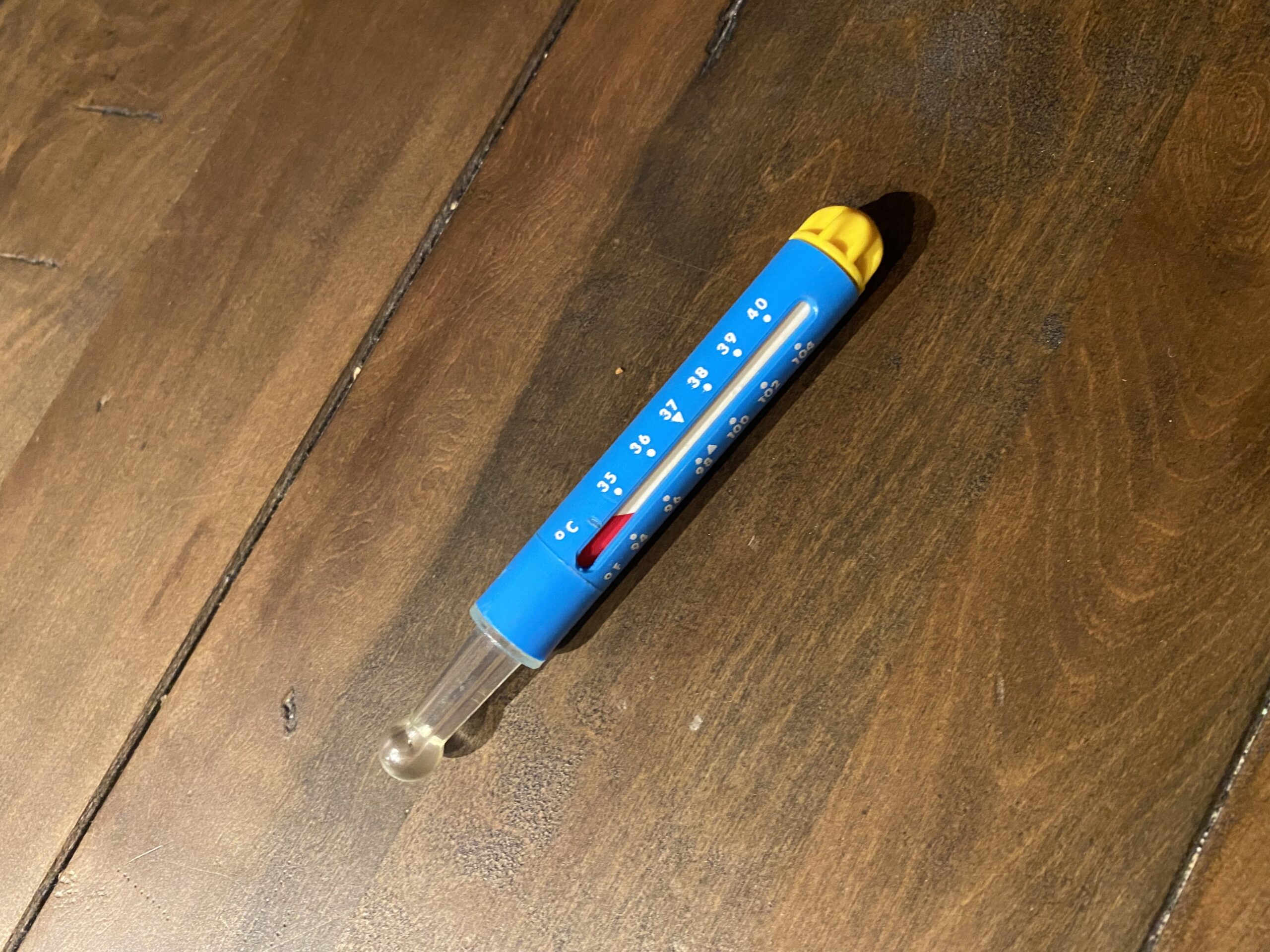
 October 16, 2022 — Sunday
October 16, 2022 — Sunday
I cannot find any manufacturer’s mark or branding on this thermometer. (I think there is a chance it is a Fisher Price toy, but it may not be.) I also do not know the year of manufacture (but based on the toxicant readings in this piece, it is likely from sometime between 1975 and 1995). If you recognize this thermometer — (perhaps you or a friend had it as a child and/or know what kit it was from, or have information as to what year it may have been manufactured, purchased, or received) — please do let me know in the comments of this article. (UPDATE!: After input from readers this has been identified as a Fisher Price toy. See the example from 1987 shown in the images below [with full doctor kit, available for sale online today as a vintage toy!])
As a general rule, vintage plastic toys should be avoided — this is especially true if the vintage plastic toy is likely to end up in the mouth of a child (by size, shape, or design — or in this case, by explicit intention!). Of course, a toy thermometer is likely to end up in the mouth of a child, and while the clear plastic end that is “supposed” to go in a child’s mouth did not test positive for toxicants, even my teenage son was quick to note that a young child is likely to put either end in their mouth — and possibly even more likely to put the yellow end in their mouth, because it is more interesting/textured/ fundamentally attractive than the plain clear plastic end.
A greater concern for the white-painted numbers on the thermometer
- In addition to the above-noted concern, the blue plastic areas with the white painted numbers tested positive for higher levels of Lead than the blue areas without painted numbers.
- Extrapolating from this difference in Lead levels, it is very likely that the white numbers are actually painted in very-high-Lead-content paint — with the numbers only testing positive at the level they are (which is likely lower than the actual Lead-content of the paint used to make those numbers) because the numbers take up so little of the space within the scope (the round reading window, which is about a 1 cm diameter circle, of the instrument doing the reading).
- So the level of the white is — in essence — “diluted” by the lower level of Lead of the blue plastic in the background within the testing window.
Please do not let your child play with this toy under any circumstances.
Full XRF readings for the toy pictured are below. For those new here (and for context for those numbers), anything with a Lead content at or over 90 ppm is considered unsafe in the paint, glaze, or coating of most items intended for use by children; anything at or over 100 ppm Lead is considered unsafe in the substrate of an item intended for children. The “substrate” in this case is the unpainted plastic itself — so the 100 ppm level applies (as a hazard level for context — but not in terms of whether any laws were broken as items like this were not regulated at all back in the era of its manufacture!).
Below is a full set of XRF test results for the vintage toy thermometer pictured.
Reading #1) On the yellow plastic
60-second reading
Readings repeated multiple times to confirm the results
- Lead (Pb): 5,816 +/- 72 ppm
- Cadmium (Cd): non-detect
- Tin (Sn): non-detect
- Mercury (Hg): non-detect
- Selenium (Se): non-detect
- Barium (Ba): non-detect
- Arsenic (As): 198 +/- 38 ppm
- Chromium (Cr): 1,125 +/- 69 ppm
- Antimony (Sb): non-detect
- Nickel (Ni): non-detect
- Copper (Cu): non-detect
- Zinc (Zn): 332 +/- 12 ppm
- Titanium (Ti): 1,280 +/- 205 ppm
- Manganese (Mn): non-detect
- Bromine (Br): non-detect
- Indium (In): non-detect
- Bismuth (Bi): non-detect
- Zirconium (Zr): non-detect
- Niobium (Nb): non-detect
- Iron (Fe): 35 +/- 17 ppm
- Gold (Au): non-detect
- Cobalt (Co): non-detect
- Tungsten (W): non-detect
- Platinum (Pt): non-detect
- No other metals were detected in consumer goods mode.
Reading #2) On the blue plastic (area with no white writing)
60-second reading
Readings repeated multiple times to confirm the results
- Lead (Pb): 1,494 +/- 26 ppm
- Cadmium (Cd): non-detect
- Tin (Sn): non-detect
- Mercury (Hg): non-detect
- Selenium (Se): non-detect
- Barium (Ba): non-detect
- Arsenic (As): non-detect
- Chromium (Cr): non-detect
- Antimony (Sb): non-detect
- Nickel (Ni): non-detect
- Copper (Cu): 50 +/- 10 ppm
- Zinc (Zn): 198 +/- 9 ppm
- Titanium (Ti): 2,607 +/- 240 ppm
- Manganese (Mn): non-detect
- Bromine (Br): 8 +/- 2 ppm
- Indium (In): non-detect
- Bismuth (Bi): 14 +/- 9 ppm
- Zirconium (Zr): non-detect
- Niobium (Nb): non-detect
- Iron (Fe): non-detect
- Gold (Au): non-detect
- Cobalt (Co): non-detect
- Tungsten (W): non-detect
- Platinum (Pt): non-detect
- No other metals were detected in consumer goods mode.
Reading #3) On the blue plastic (area WITH white writing)
60-second reading
Readings repeated multiple times to confirm the results
- Lead (Pb): 2,086 +/- 33 ppm
- Cadmium (Cd): non-detect
- Tin (Sn): non-detect
- Mercury (Hg): non-detect
- Selenium (Se): non-detect
- Barium (Ba): non-detect
- Arsenic (As): non-detect
- Chromium (Cr): non-detect
- Antimony (Sb): non-detect
- Nickel (Ni): non-detect
- Copper (Cu): 40 +/- 10 ppm
- Zinc (Zn): 205 +/- 10 ppm
- Titanium (Ti): 3,429 +/- 260 ppm
- Manganese (Mn): non-detect
- Bromine (Br): 5 +/- 3 ppm
- Indium (In): non-detect
- Bismuth (Bi): non-detect
- Zirconium (Zr): non-detect
- Niobium (Nb): non-detect
- Iron (Fe): non-detect
- Gold (Au): non-detect
- Cobalt (Co): non-detect
- Tungsten (W): non-detect
- Platinum (Pt): non-detect
- No other metals were detected in consumer goods mode.
Note: Clear plastic end was non-detect for the primary toxicants we look for in our testing (Lead, Cadmium, Mercury, Arsenic, Antimony).
Online listing showing this toy for sale: October 16, 2022

Never Miss an Important Article Again!
Join our Email List








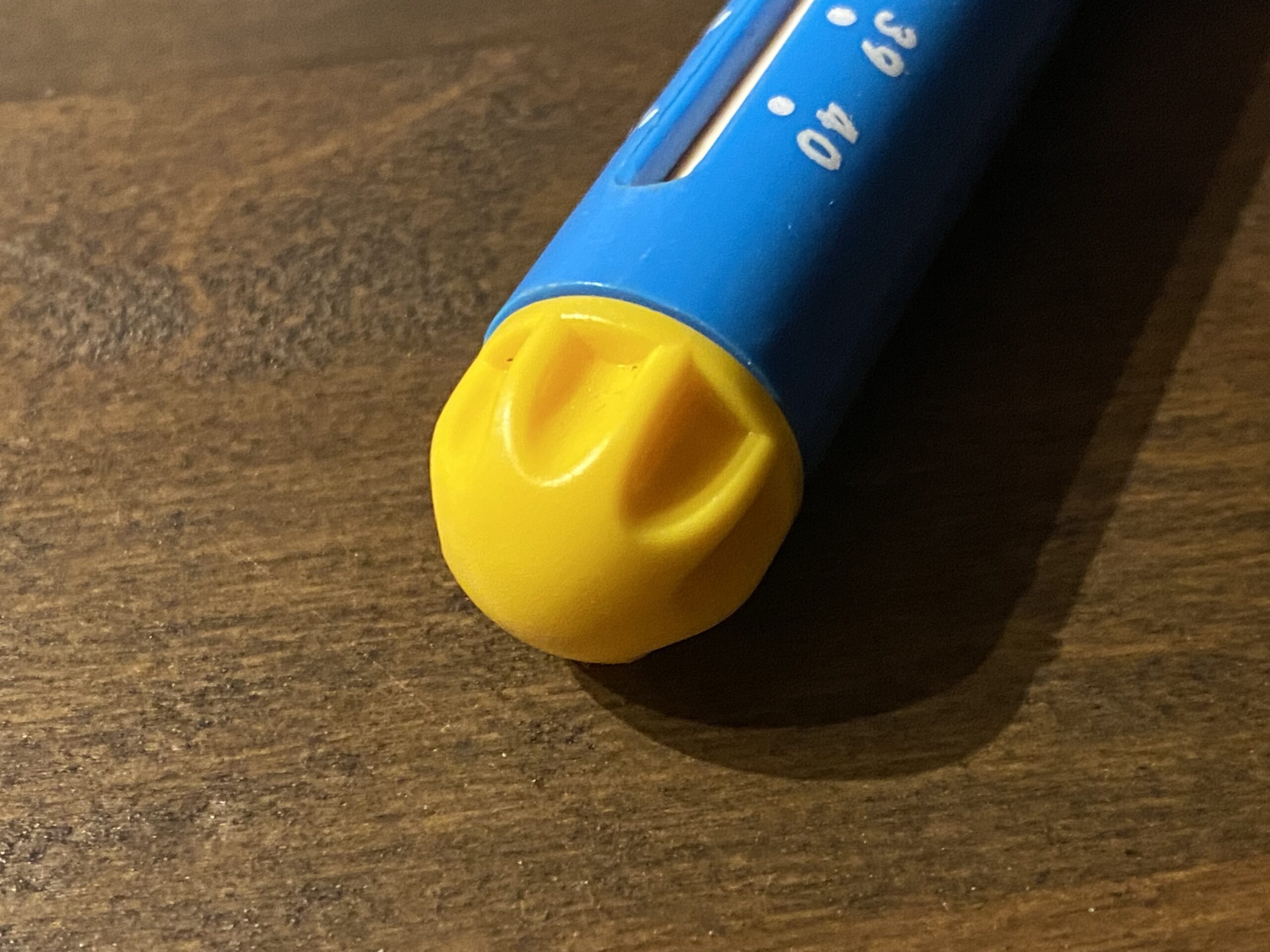
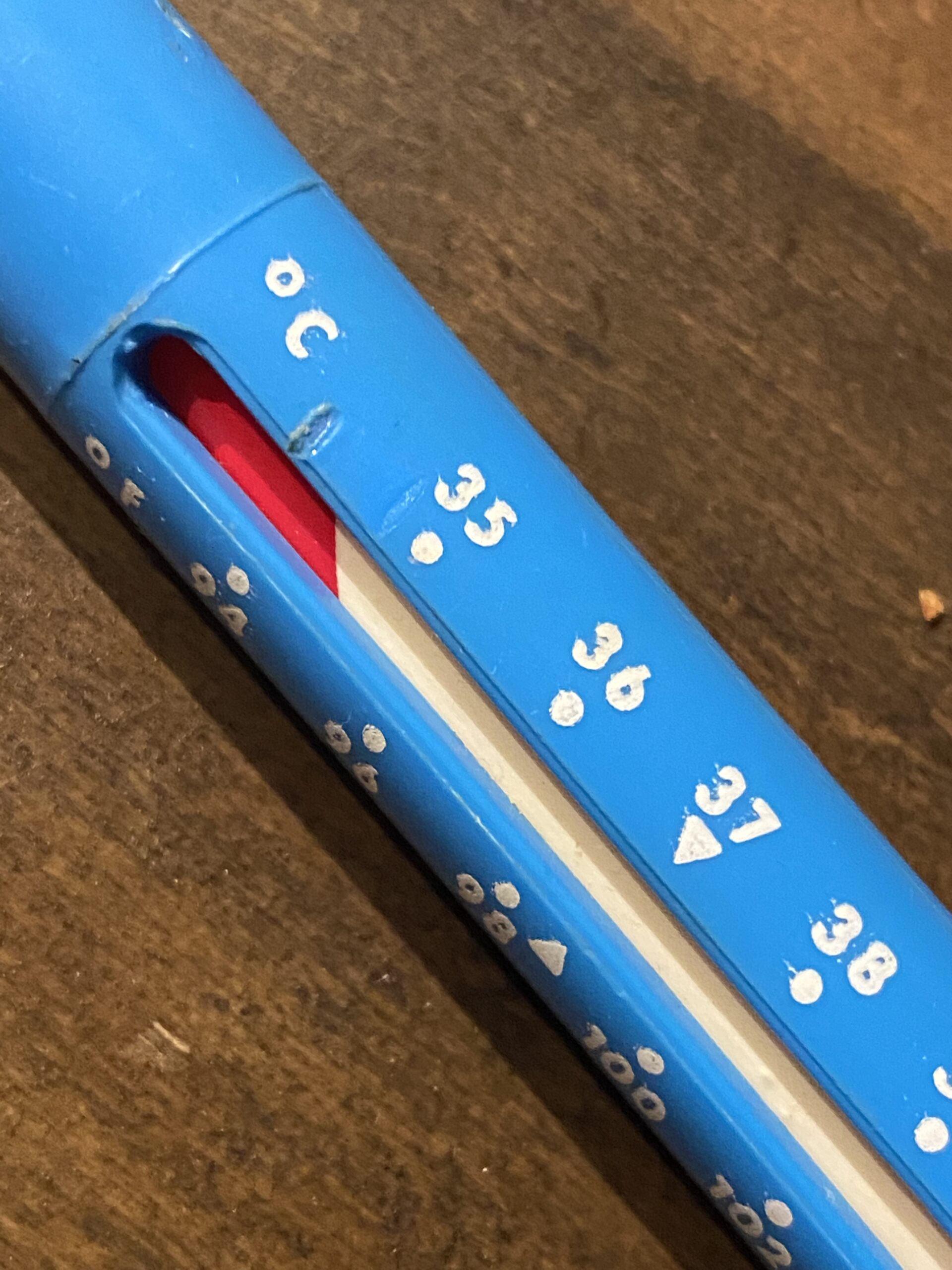
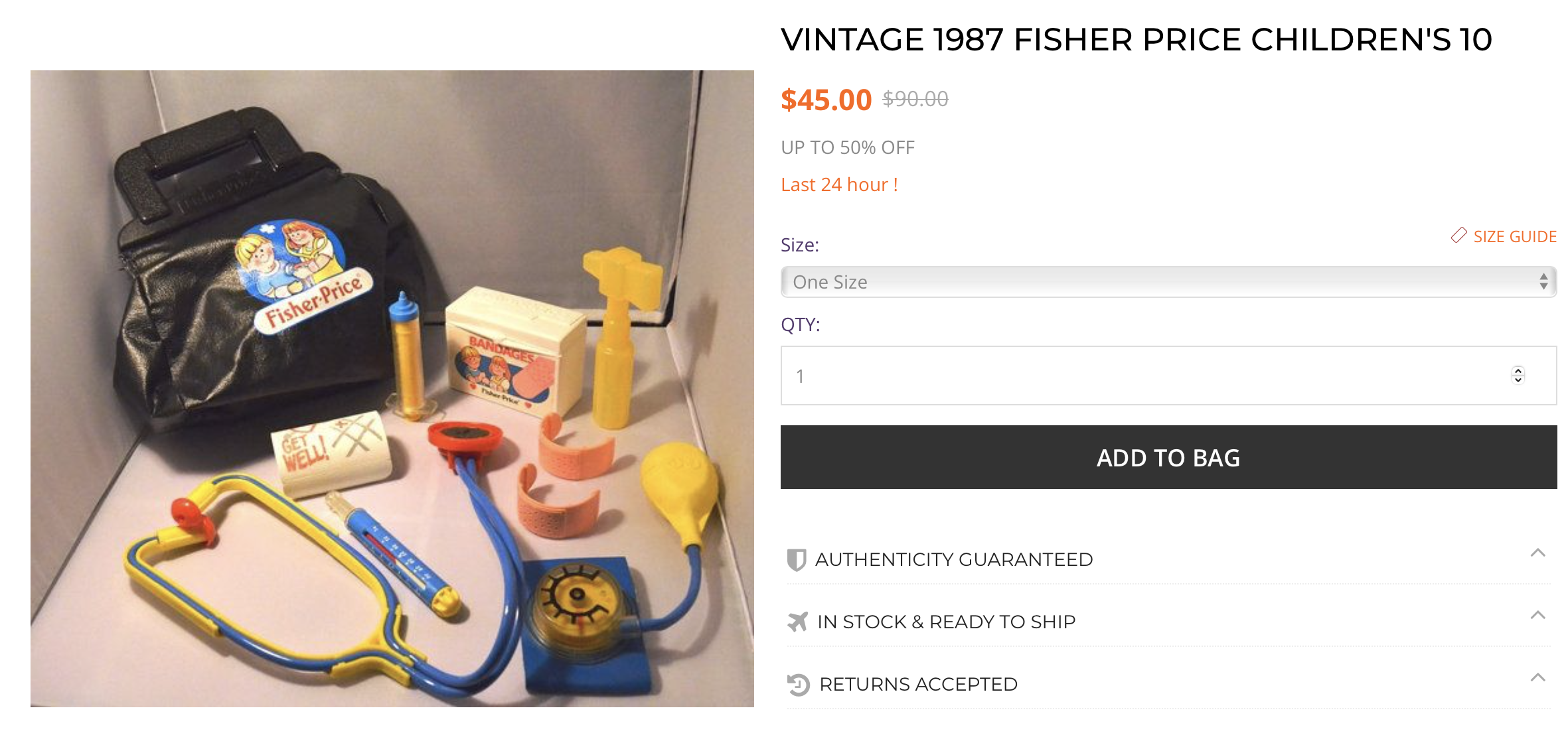
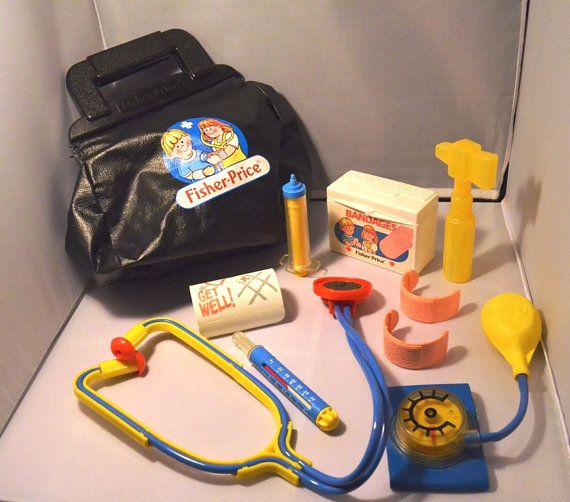

We had this toy thermometer in a Dr. kit. I think it was Fisher Price. Our twins were born in 1995, so I’m guessing we got this in maybe 1997 or 1998.
We owned this. All my children used this item when playing doctor. I am so devastated. Definitely Fisher Price. I can send you an ebay photo, a replica of the product we had.
We had this kit as teens for a Halloween prop in the late 1980’s /early 90’s and I let my children play with it in the 2010’s. They loved it so I hung onto it because I thought the late 90’s was ‘recent enough’ to have resolved issue of lead in Fisher-Price toys.
Even everything I’ve learned …I still make mistakes and hope/trust/wish favorite toys are safe. It’s really good that Tamara specifically said if you have vintage plastic stuff…get rid of it.
Take care, Everyone!
I still have this kit and my grandkids like to play with it! Should the whole kit be trashed or is it just the thermometer?
I would say the whole kit should be trashed – as both the blue and yellow plastic were positive. Red may be positive for Cadmium and any other painted markings might be positive too.
T
Thank you for your input and all the work that you do to keep us safe!